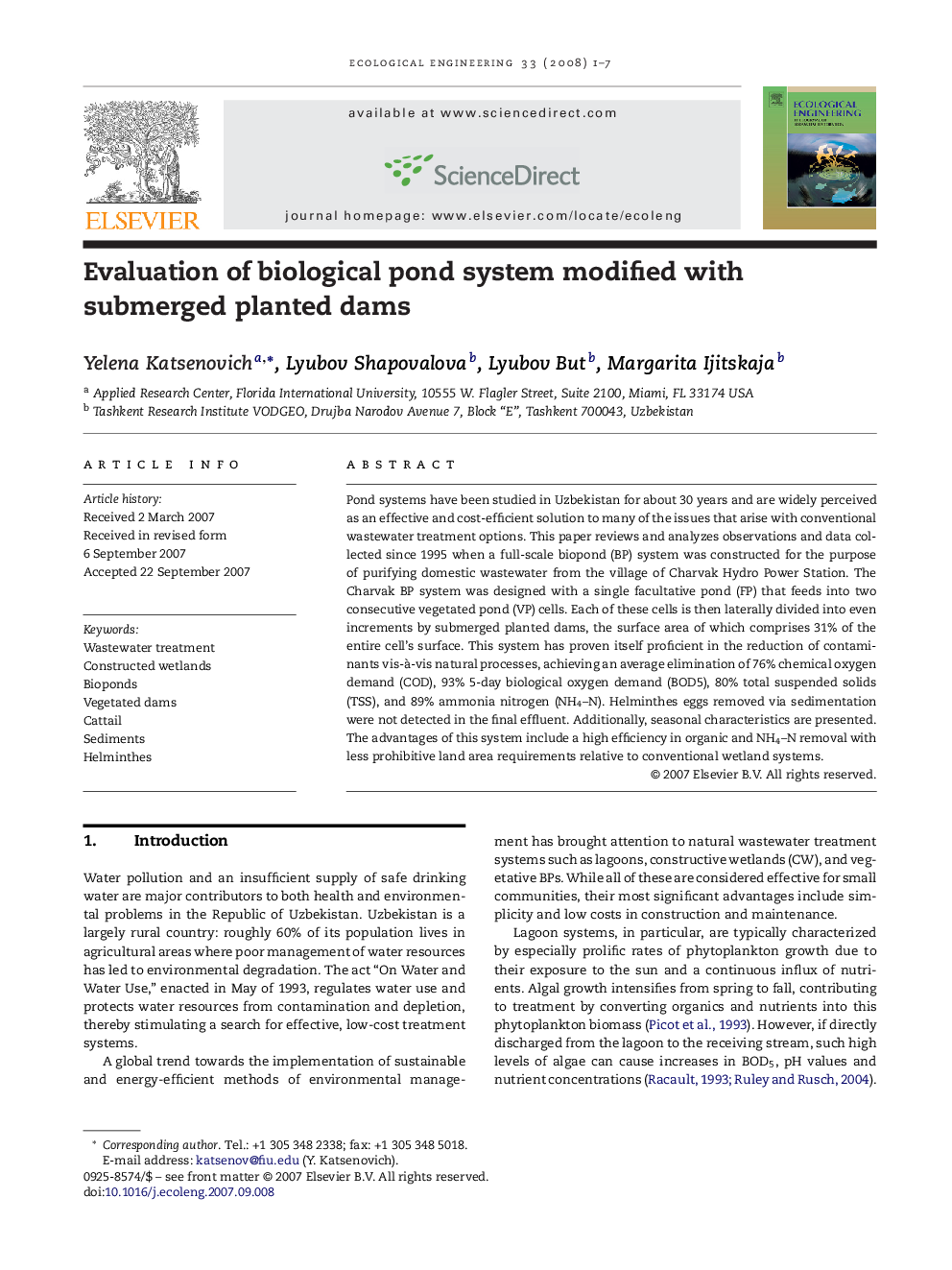| Article ID | Journal | Published Year | Pages | File Type |
|---|---|---|---|---|
| 4390867 | Ecological Engineering | 2008 | 7 Pages |
Pond systems have been studied in Uzbekistan for about 30 years and are widely perceived as an effective and cost-efficient solution to many of the issues that arise with conventional wastewater treatment options. This paper reviews and analyzes observations and data collected since 1995 when a full-scale biopond (BP) system was constructed for the purpose of purifying domestic wastewater from the village of Charvak Hydro Power Station. The Charvak BP system was designed with a single facultative pond (FP) that feeds into two consecutive vegetated pond (VP) cells. Each of these cells is then laterally divided into even increments by submerged planted dams, the surface area of which comprises 31% of the entire cell's surface. This system has proven itself proficient in the reduction of contaminants vis-à-vis natural processes, achieving an average elimination of 76% chemical oxygen demand (COD), 93% 5-day biological oxygen demand (BOD5), 80% total suspended solids (TSS), and 89% ammonia nitrogen (NH4–N). Helminthes eggs removed via sedimentation were not detected in the final effluent. Additionally, seasonal characteristics are presented. The advantages of this system include a high efficiency in organic and NH4–N removal with less prohibitive land area requirements relative to conventional wetland systems.
